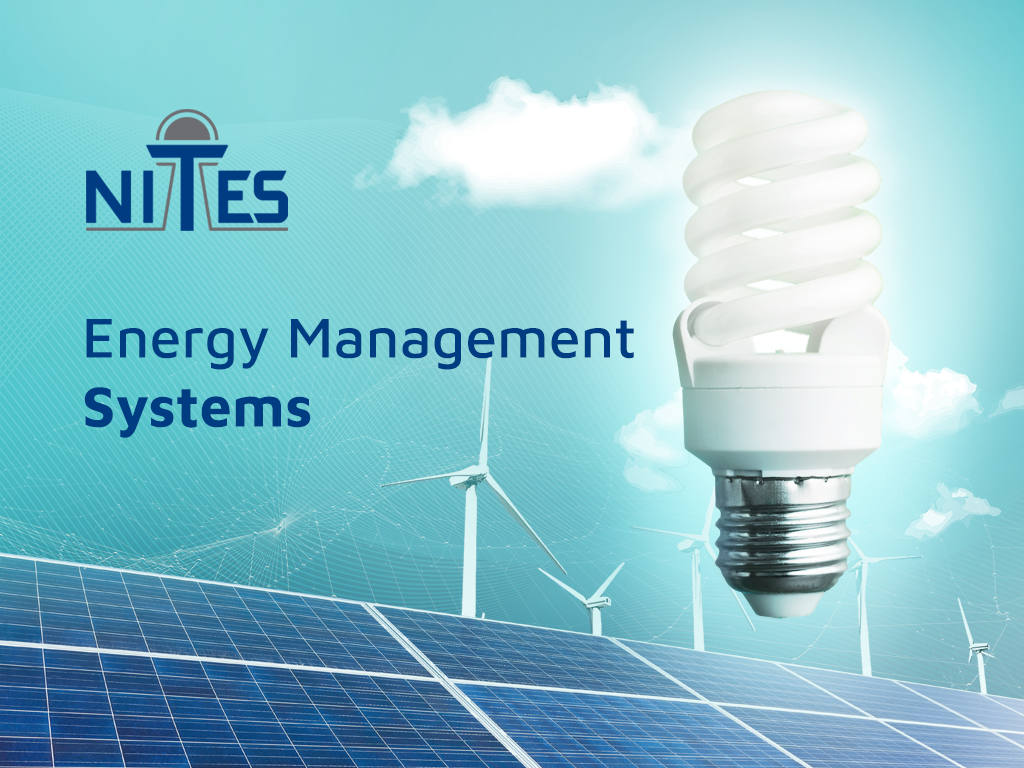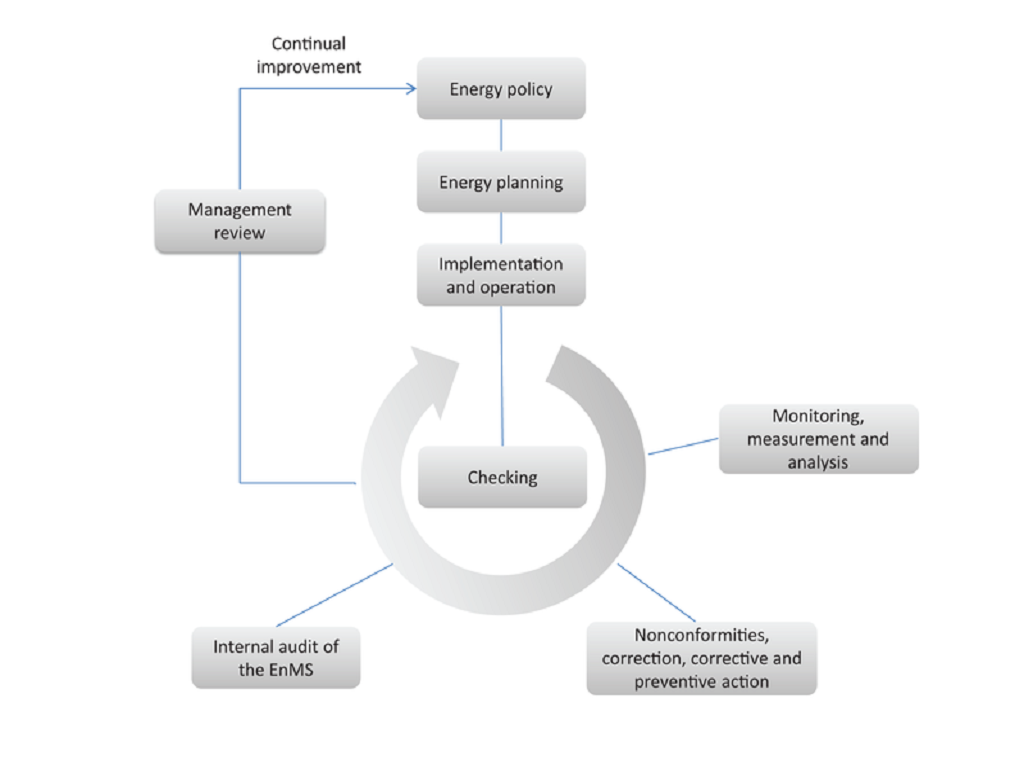NITES Experiences – Energy Management Systems
 Thursday, 11.02.2021.
Thursday, 11.02.2021.
 12:19
12:19

One of the tools that member states can use to the end of achieving energy savings is to implement an Energy Management System (EnMS). Its format is standardized through the international standard ISO 50001, which is gradually amended with other related standards (ISO 50002 on energy audit, ISO 50003 on requirements for institutions that carry out the energy audit and certification of energy management systems and ISO 50004, which contains recommendations for implementation, maintenance and upgrade of energy management). The ISO 50001 standard has been built into the European system of standardization. The original European standard EN 16001 has thereby been replaced.
The standards do not recommend the form of the implementation. The rest of the article presents the main principles, as per the experience of NITES, for the proper implementation of EnMS based on the ISO 50001 standard.
Reasons for implementation of EnMS
Changes in the use of energy often don’t provide enough timely information to consumers and providers of utility services to warn them of potential energy dissipation. The supply of buildings with network forms of energy and their consumption is currently usually monitored only after the fact, through calculations, which, according to the rules of the network industry, are done only once a day, a month, each three months or annually, depending on the type of the measuring device and the consumption.
The later the data on the quantity of the consumption of the given form of energy are known, the more likely it is that they are no longer so useful for efficient energy management.
A properly designed and run EnMs removes this kind of information discrepancy. The system can monitor the use of energy to the point that it is possible to estimate whether the current consumption is adequate or not.
For a long-term functionality of the EnMS system, it needs to be largely automated, as this removes the errors inevitably caused by the human factor.
It is very important to choose the degree of automation in an adequate way. Otherwise, there is a risk of the costs of the system exceeding the benefits, which undermines the purpose and jeopardizes the long-term sustainability.
In essence, it is the long-lasting quality of the system that is the key to the visible benefits of EnMS, because the amount of data and the experience increase with time, which enables a quicker and more efficient detection of abnormalities in the consumption of energy and taking efficient steps toward further improvement.
This way, the system can more efficiently share the best practices and, to an extent, use the good technical skills of industry experts and the experiences of solution providers with certain energy saving technologies.
Definition of EnMS
The Energy Management System is essentially a set of activities that contribute to a continuous improvement of energy performances in a certain energy economy.
It is the international standard ISO 50001 that makes it possible to practically create EnMS systems that would have a long-term effect and be useful to each organization.
The specification of EnMS promotes the approach of constant upgrade, using the interactive method PDCA (“Plan-Do-Check-Act”). The meanings of the individual steps are as follows:
“Plan” entails:
– Establishing the energy policy of the organization;
– An overview of the current consumption of energy;
– Determining the status of the given (referential) consumption;
– Defining the energy performance indicators (EnPI);
– Defining the goals and target values of the EnPI;
– Specifying the “action plans” necessary for achieving the goals;
“Do” entails the practical implementation of EnMS action plans.
“Check” includes the processes of monitoring and measuring and key characteristics of the activities that determine the energy performances relative to the energy policy, goals and reports on the results.
“Act” entails the adoption of measures for a continuous reduction of energy consumption and improvement of EnMS. All the activities that make up the EnMS system must be documented, that is, they must exist in a written form, must be managed (which entails regular maintenance, archiving of old versions etc.) and there must be certain activities allocated to certain jobs or workers (so that the competences and duties are clear).
Furthermore, it is of essential importance for the EnMS system to be constantly rated, of which members of the organization’s management must be notified, primarily of its results, so as to ensure its relevance when it comes to the management of the entire organization.
Regarding the time and the order of the necessary materials, the creation and implementation of EnMS should consist of the following steps:
1. Defining the object and the boundaries covered by EnMS.
2. Establishing the energy policy of the organization, including, among other things, the organization’s dedication to achieving energy efficiency.
3. Energy planning for:
(i) overview and analysis of the current energy usage practice,
(ii) defining the main line,
(iii) implementing energy efficiency performance indicators for monitoring and measuring,
(iv) quantifying the target values for the relevant functions, levels and processes with the help of identified potentials of saving,
(v) action plans for achieving the set goals.
4. Implementation and operations of EnMS, that is, the phase of preparation of the tools and the elements necessary for the operation of the system and its activation.
5 Constant controls, consisting of:
(i) monitoring, measuring and analyzing the data,
(ii) identifying the discrepancies and taking corrective and preventive steps,
(iii) carrying out regular internal audits of EnMS for the purpose of verification of its proper implementation in line with the principles of the standards and the frameworks of EnMS within the organization.

In order for an EnMS system to be functional and useful in practice, it needs to contain:
– A definition of quantified goals;
– A concrete plan for their realization;
– A practically, financially and temporally realistic implementation process;
– Competent and managed distribution of operations;
– A consistent and regular audit;
– Efficient corrective measures in case of violation of the regulations.
If all these requirements are met, it is possible to seek an EnMS certificate from an accredited organization which independently confirms that the system fully complies with the standard’s principles. The certification is the last step in the creation of a system that is truly functional and sustainable in the long term.
 Nites d.o.o. Beograd
Nites d.o.o. Beograd
Most Important News
06.04.2024. | Agriculture
Preconditions for Placement of Fresh Blueberries and Dried Plums in Chinese Market Secured

16.04.2024. | News
Jovan Ciric, Leasing Director Retail MPC Properties – MPC Echo symbolizes our desire for good ideas and innovative endeavors to spread freely and bring about positive changes

16.04.2024. | News
10.04.2024. | Finance, IT, Telecommunications, Tourism, Sports, Culture
Creative Industry – What This Serbian Economy Sector Worth EUR 2 Billion Encompasses

10.04.2024. | Finance, IT, Telecommunications, Tourism, Sports, Culture
25.04.2024. | Industry, Transport
Chinese company Lianbo opens car engine part factory near Novi Sad

25.04.2024. | Industry, Transport
16.04.2024. | News
Economy Fair in Mostar opens – 26 companies from Serbia exhibiting

16.04.2024. | News
25.04.2024. | Construction, Tourism, Sports, Culture
Zlatibor to get recreation lake in “Krst” location – Tender for preparation of documentation for construction of Miladin Pecinar dam opened

25.04.2024. | Construction, Tourism, Sports, Culture


 Izdanje Srbija
Izdanje Srbija Serbische Ausgabe
Serbische Ausgabe Izdanje BiH
Izdanje BiH Izdanje Crna Gora
Izdanje Crna Gora


 News
News






